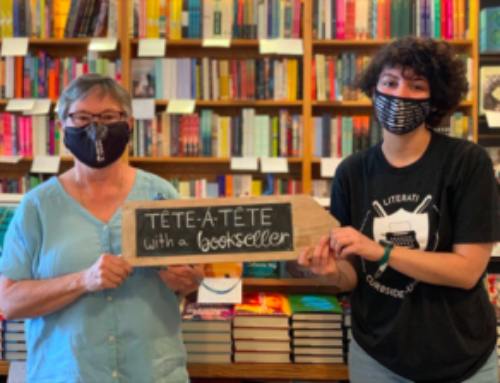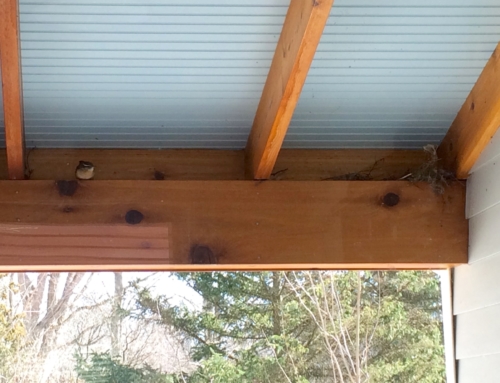Can a nature-loving woman, with a penchant for getting grumpy about misguided land use, enter an abandoned fire station on West Lafayette, Detroit, and feel—happy expectation?
 This might be one of my best Forage discoveries yet: an organization called Ponyride organizes Clandestine Dinners (yes, that’s a proper name) in Detroit’s abandoned buildings. Part performance art, part old-school fundraising, they provide an excellent example of imagination at work where imagination is sorely needed.
This might be one of my best Forage discoveries yet: an organization called Ponyride organizes Clandestine Dinners (yes, that’s a proper name) in Detroit’s abandoned buildings. Part performance art, part old-school fundraising, they provide an excellent example of imagination at work where imagination is sorely needed.
(As you might already know, Forage is my online log of offline discoveries—the arts and wild nature, mostly. You’ll find some photos, by me usually, and, in case you want to read further, some links at the end of the posts, but I hope you’ll feel encouraged to explore the world beyond screens.)
Because of the generosity and adventurous spirit of my friend L., who’s in the process of moving back into the city after decades away, I got to experience a Clandestine Dinner in an old firehouse last week as her guest. This particular one was a fund raiser for another Detroit-born brainstorm: Write A House, a nonprofit that puts talented writers into renovated Detroit houses for the cost of taxes and utilities.
Dinner guests register ahead of time and don’t know exactly where they’re going (somewhere in Detroit) until an hour or so before dinner, at which time they head to the Ponyride headquarters. Other than the guides waiting out front there, we saw only one other person—on a bike—during our short leafy drive from the Interstate. We drove several more blocks, then parked (always easy in Detroit unless you are downtown during a “big event”—Tigers, Red Wings, Taylor Swift—which we were not) within view of the station’s open garage door. A small crowd of well-dressed people stood chatting in the golden sunlight of late afternoon where fire trucks had once roared across the sidewalk.
In June, in non-city-center Detroit, lushly green trees are far more numerous than people. There’s promise in that. It’s not true the city looks like a warzone, it’s way too alive for that. But it is definitely weirdly unpopulated for a place that less than seventy-five years ago boasted the highest per capita income in the country, and one million residents.
I was recalling Detroit: An American Autopsy, by Charlie LeDuff, a book which chronicles, among other things, the gutting of the city’s fire-fighting force and of municipal services in general—simple things many of us take for granted, like trash pickup. “What if there’s a fire…?” my friend wondered aloud as I was wondering if the streetlight we’d carefully parked under would glow when darkness fell.
We joined the edge of the crowd and chatted among ourselves. Moments passed before author and Write A House founder Toby Barlow wandered up and invited us inside to take a seat. Three, long rows of rustic farm-style tables—built in place during the 72-hour whirlwind of preparation, we learned later—were laid with cutlery, cloth napkins, and centerpieced with roughcut 4x4s, votive candles, large Mason jars holding pillar candles, glass vases of flowers, and an artful scatter of well-thumbed hardcover books. We took a seat near the middle of the room and introduced ourselves to our tablemates.
The oatmeal-colored glazed ceramic tile walls and scrubbed concrete floor amplified our voices and laughter. Among our dinner companions were a stylish mother and adult-son couple, a young bachelor Googler who’d recently moved from Ann Arbor to midtown Detroit, and a youngish married couple who’d driven up from Virginia (he’s a writer, originally from Michigan, who hopes to convince his wife to move to the city). We three? Middle-aged professionals with kids feeling a little like kids, ourselves, to be part of something so inventive and hopeful. Eventually everyone revealed a local connection, not to the neighborhood of the fire station, but to Metro Detroit. My own is layered and long and includes my first home, on Detroit’s East Side, which my parents left while I was still an infant.
Four different chefs, with four different Detroit restaurants in the works, opened the meal by describing the origins of the plates they’d be serving. A pig had been shipped up from Tennessee from the charcuterie chef’s Dad’s farm. Halibut had been sustainably sourced by the sushi chef, a detail which drew applause. A bevy of efficient servers carried four different courses to us from the open-air “kitchen” which had been set up out back —charcuterie, sushi, Thai curry, then grilled lamb, each paired with four different bottles of champagne or wine. Some of the servers sought out the vegetarians among us and delivered special meals. I made a dessert of the last sips of fine Grenache-Syrah blend my ale-loving self was sipping with beginner’s-mind pleasure. Talk about cognitive dissonance. I never stopped thinking about the deprivation that’s come to define life for most Detroiters.
With our last bites the firehouse turned dusky—the sun set before the meal concluded and there were no electric lights. We moved the candlelit Mason jars closer to our menu cards and an elegantly printed sheet of paper with two lists (left): “Detroit is a literary city. Here is a selection of our favorite hubs of bookish culture” and “Detroit is a city of stories. Here is a selection of our favorite works of literature.” My dinner companions and I leaned in closer to one another. We talked about many things—from eyebrow-waxing to just how close Ann Arbor and Grand Rapids are to feeling the Spirit of Detroit.
I forgot to check whether the streetlights were working, but they must have been, for when it came time to depart we could easily see our way to our car.
After driving a few deserted blocks, we were back on I-75 heading for the I-96 interchange and home. “I hate to admit it,” I said, “but at night, in Detroit, I always feel a little relieved to head down an entrance ramp into the flow of Interstate traffic.” My companions murmured agreement. Many people, I was thinking, have not given up on this city. Although among those who experienced the 1970s, ‘80s, and ‘90s—as L. and I did, as Charlie LeDuff did—a certain weariness underlies conversations about Detroit’s future. The struggle has been long and it is not at all clear yet that it can be won. I’m encouraged by 20-something entrepeneurs like my friend Christian, who happened to grow up in West Michigan and graduate from Princeton. He’s launching a business in Detroit that will employ former felons to manufacture high-end men’s clothing.
And in Ladder Company 12, on June 6, 2014, I got to participate in what felt like a rehearsal for an evening in the building’s or at least the neighborhood’s future. So, yes, I felt happy expectation. Thanks Ponyride and Write A House.
Click here to read more about Ponyride, and here to read more about Write A House.
Click here to read more about Chef Josh Stockton’s Gold Cash Gold (he prepared the charcuterie), here to connect with Chef Mike Han’s Social Sushi (he prepared the sushi), and here to read more about Chef Brad Greenhill’s Katoi (he prepared the curry). Chef Kate Williams of Republic prepared the lamb.










Thanks Alison. Good read about Detroit. I’ll keep reading your blog…. Where you with the fabulous Lori S ?
Hoping all’s well.
Mary
I’m really glad to hear you liked reading about our foray into what I’m beginning to think of as New Detroit. Thanks for letting me know. Lori S.–yes! Fabulous, indeed.
I LOVED this!! What a grand adventure in a grand old city! Hope to enjoy one of these (especially with you) one day soon! <3
Thank you for commenting! I’m pretty inspired by both Ponyride and Write A House. And yes–I would love to see you.